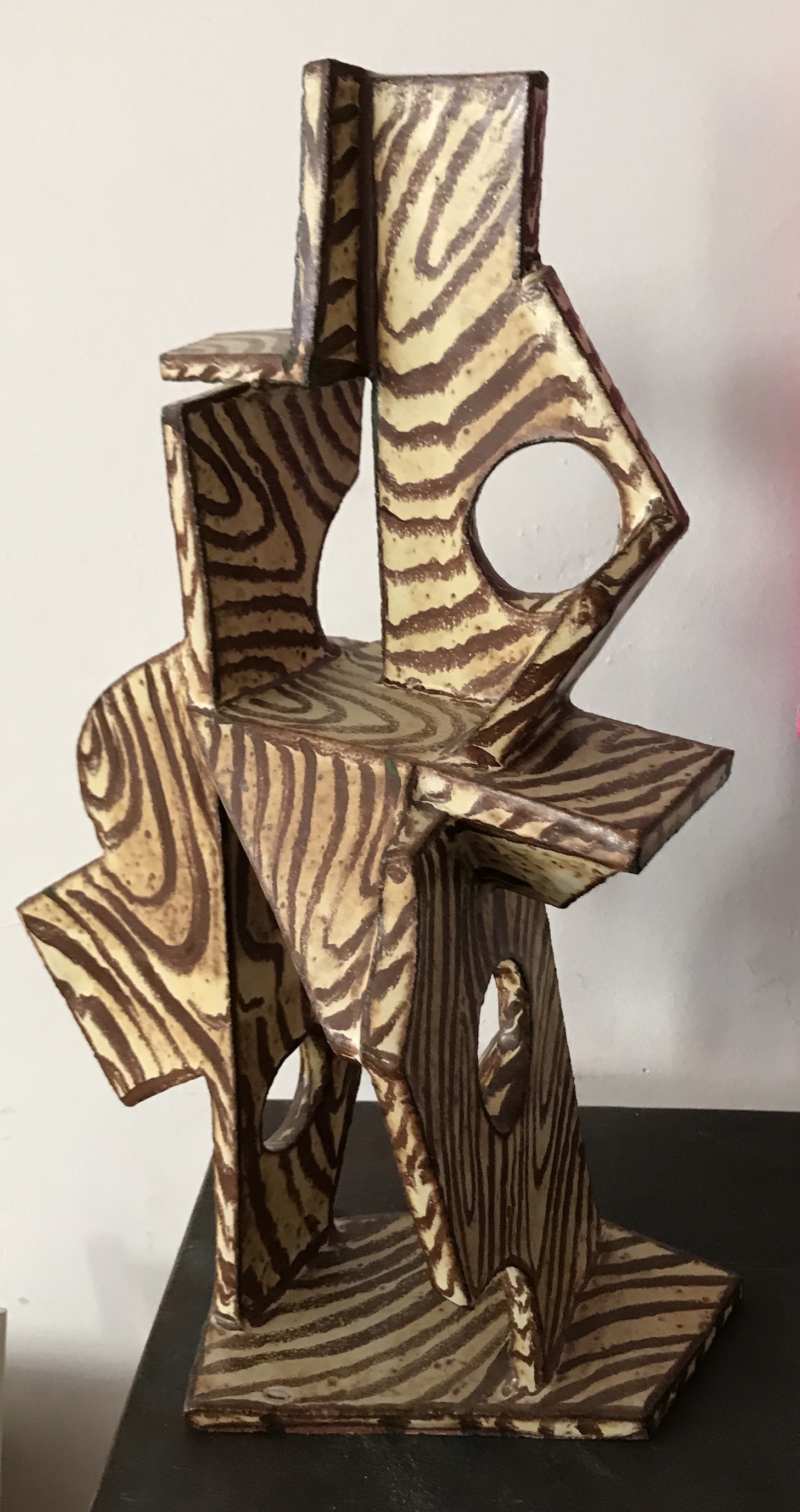New Faces: Mid-Career Artists LA/NY
June 23rd – September 21st, 2019
Opening Reception: Sunday, June 23rd, 2-5 pm
Shoshana Wayne Gallery is pleased to present, New Faces: Mid-Career Artists LA/NY, a pop-up show featuring works by a selection of artists based in Los Angeles and New York, including Ann Agee, Nancy Baker Cahill, Jennifer, Boysen, Tom Burckhardt, Lisa Hoke, Carlson Hatton, Salomón Huerta, Christy Matson, Sangram Majumdar, Sarah Peters and Elena Sisto. The exhibition will be on view June 23rd through September 21st, 2019, with an opening reception on Sunday, June 23rd, from 2-5pm.
Inspired by a drawing the artist found in her mother’s diary, Ann Agee’s Negishi Heights 1957 (2015) is a re-imagined interior of an apartment in Japan in which her parents lived before she was born. Her father, a civil engineer and her mother, an artist, transformed their modernist military housing using Japanese paper lanterns, ceramics, baskets, and tonsus. Her work often expands upon the connection between women and the domestic sphere.
Jennifer Boysen’s meditative and sculptural canvases push the conversation surrounding the nature of painting. By stretching canvas over a variety of found or fabricated objects, cultural detritus is allowed to remerge in unexpected ways. Layers of egg tempera paint imbue the surface with a matte texture, and objects push outward to produce pieces that are both feminine and masculine, a defiant rejection of global consumer culture, and a simplification of form.
Tom Burckhardt’s work is known for its subversion of the boundaries between representation and abstraction. Resisting the institutionalized model of abstract painting while embracing the medium’s humorous potential, his paintings invite prolonged analysis, a visual and cerebral experience in which the viewer can delight in the ways the artist has fitted seemingly unrelated things together, leaving the viewer unable to resist the pull of pareidolia.
For Nancy Baker Cahill, the human body is a site of ongoing struggle and resistance. Her graphite “Surd” drawings, with their twisting, corporeal and sinewy forms are punctuated by colored circles of varying sizes. The “Surds,” a concept found in mathematics, are a metaphor for life’s unpredictable and often irrational influences. Here though, the “Surds” serve to impose order as the figures’ organic forms intertwine, pull apart, and emerge in a graceful yet tense kind of dance, floating in the space between masculine and feminine.
Carlson Hatton’s mixed-media tableaus seamlessly integrate acrylic, graphite, and paper with printmaking techniques to create dense environments which are layered with form and figuration. While slipping in and out of abstraction, Hatton presents the viewer with a world that is fragmented and frenetic, both real and imagined. Inspired by Cubism, cartooning, and Japanese woodblock prints, Hatton seeks to capture what he calls the “psychedelia of everyday life.”
Lisa Hoke’s intensely-colored murals and freestanding sculptures are comprised of, of all things, refuse - cardboard, felt, wire, packaging, foil containers, wood. Each piece is a kind of reflection of the places from which she collects the materials, a reminder of the sheer amount of excess we produce on a daily basis. As with all of Hoke’s wall pieces, The Taste Of (2019) expands and contracts with the site in which it is installed, while exuberant colors and rich textures propel her pieces into the realms of mosaic, sculpture, and assemblage.
Salomón Huerta’s paintings of Mixed Martial Arts fighters are an extension of his series of works depicting bloodied and battered boxers. The figures, rendered in loose, expressive strokes of muted grays, represent violence against men of color in our society, specifically black men, but can also be interpreted more broadly to underscore the public’s prurient interest in depictions of violence in general.
Sangram Majumdar’s paintings speak to in the slippage of meaning that comes from both mistranslation or misinterpretation. The repeated image of a raised palm derives from representations of Rama killing the demon Tataka in the Ramayana Epic, and a particularly powerful symbol of the demonization of women throughout history. Hands are an extension of the body, of a person, of how humans relate to each other, and in our current political climate, hands are also representative of the ways in which the bodies of women and people of color are under attack.
Christy Matson’s understated woven works utilize yarn of varying textures in soft, muted colors, and hand-weaving using a highly-specialized loom. Her textiles, more akin to abstract paintings, draw inspiration from ethnographic textiles, the history of modernism, and their converging histories. A celebration of attention to detail, each piece is the meticulous result of knot-tying, dyeing yarn, drawing and painting, and drafting weave structures.
Sarah Peters’ bronze sculptures such as Figurehead (2018), bring to mind a variety of inspirations ranging from Assyrian figureheads to Greco-Roman masks, to Egyptian funerary figures, combined with elements drawn from the artist’s imagination, and the history of sculpture itself. Here, the figures’ soft, almost angelic expression suggests both peace and euphoria, sharply contrasted with the heavily-stylized waves of flowing hair. Her work re-imagines and merges outwardly disparate parts into one harmonious whole.
Elena Sisto’s As We Dream (2017) takes its title from the jazz classic Lazy Afternoon, by Jerome Moross and John La Touche. Borne of her intuitive process, it speaks to a heightened sense of awareness in which small animals and insects are buzzing, flying and crawling about with an urgency that is both a reflection of the artist’s own personal thoughts, dreams and memories, and a counterpoint to our own mortality. A kind of vanitas, in As We Dream an orange sunset peeks out above saturated green grass, a reminder that day is almost done.
For more information, contact Rosie at director@shoshanawayne.com
































